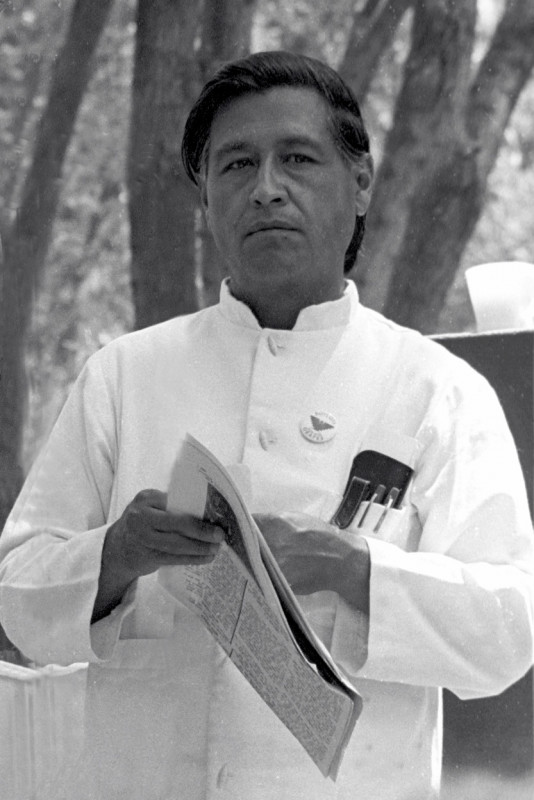An overview of the childhood and early education of Cesar Chavez, highlighting the experiences that shaped the journey.
Cesar Chavez was a prominent American labor leader and civil rights activist. He co-founded the National Farm Workers Association (NFWA) with Dolores Huerta and Gilbert Padilla. NFWA later merged with the Agricultural Workers Organizing Committee (AWOC) to form the United Farm Workers (UFW) labor union. Chavez's ideology blended left-wing politics with Catholic social teachings, advocating for the rights and fair treatment of farmworkers through nonviolent means.
1906: Grandfather bought a farm
In 1906, Cesario Chavez bought a farm in the Sonora Desert's North Gila Valley.
November 1925: Family Buys Buildings
In November 1925, Librado and Juana Chavez bought a series of buildings near the family home, including a pool hall, store, and living quarters.
March 31, 1927: Cesar Chavez Born
On March 31, 1927, Cesario Estrada Chavez was born. He later became a prominent American labor leader and civil rights activist.
April 1929: Family Moved Into Storeroom
By April 1929, the Chavez family moved into the galera storeroom of Librado's parental home, then owned by the widowed Dorotea.
1933: Began Attending Laguna Dam School
In 1933, Cesario Chavez began attending Laguna Dam School where he was expected to change his name to Cesar and forbidden from speaking Spanish.
July 1937: Death of Dorotea
In July 1937, Dorotea, Chavez's grandmother, died and the Yuma County local government auctioned off her farmstead to cover back taxes.
1939: Farm Sold
In 1939, the Chavez family's house and land were sold after being auctioned off by the Yuma County local government to cover back taxes, despite Librado's delaying tactics. This was a formative experience for Cesar.
June 1942: Left Formal Education
In June 1942, Cesar Chavez graduated from junior high and left formal education to become a full-time farm laborer.
1948: Marriage to Helen Fabela
In 1948, Cesar Chavez married his high school sweetheart, Helen Fabela, after returning from military service. The couple moved to San Jose, California.
1949: Birth of Fernando
In 1949, Cesar Chavez and Helen Fabela had their first child, Fernando.
1950: Birth of Sylvia
In 1950, Cesar Chavez and Helen Fabela had their second child, Sylvia.
1951: Birth of Linda
In 1951, Cesar Chavez and Helen Fabela had their third child, Linda.
1952: Birth of Eloise
In 1952, Cesar Chavez and Helen Fabela had their fourth child, Eloise.
December 1953: Our Lady of Guadalupe church opened
In December 1953, the Our Lady of Guadalupe church, which Chavez helped McDonnell construct, opened in Sal Si Puedes.
1953: Birth of Anna
In 1953, Cesar Chavez and Helen Fabela had their fifth child, Anna.
1957: Birth of Paul
In 1957, Cesar Chavez and Helen Fabela had their sixth child, Paul.
1958: Birth of Elizabeth and Anthony
In 1958, Cesar Chavez and Helen Fabela had their seventh and eighth children, Elizabeth and Anthony.
April 1962: Move to Delano and unionization efforts
In April 1962, Cesar Chavez and his family relocated to Delano, California. He began his efforts to form a farm workers' labor union, initially concealing his intentions by claiming to conduct a census of farm workers to assess their needs. During this time, he started developing what would become the National Farm Workers Association (NFWA).
September 1964: NFWA Headquarters Move
In September 1964, the NFWA moved its headquarters from Cesar Chavez's house to an abandoned Pentecostal church in Albany Street, West Delano.
1966: Protest Camp in Delano
By late fall of 1966, a protest camp had formed in Delano, opening a medical clinic and children's nursery. Protesters were entertained by Luis Valdez's El Teatro Campesino, which put on skits with a political message. Tensions arose between the striking farm-workers and the influx of student radicals.
September 1968: Hospitalization and Recuperation
In September 1968, Cesar Chavez was hospitalized due to worsening back pain and then spent time recuperating at St Anthony's Seminary. After returning home and finding it too crowded, he moved into Forty Acres. He used his image of physical suffering as a tactic in his cause.
March 1969: Diagnosis and Treatment of Back Pain
In March 1969, Cesar Chavez was examined by Dr. Janet Travell, who identified fused vertebrae as the cause of his back pain and prescribed exercises and treatments to alleviate it.
1970: Became a Vegetarian
In 1970, Cesar Chavez became a vegetarian, influenced by his Catholic faith and social activism. He also shunned most dairy products except cottage cheese, and avoided processed foods, crediting the diet with easing his chronic back pain.
February 1977: UFW Executive Board Visits Synanon
In February 1977, Chavez brought the UFW's executive board to the Synanon compound, participating in "the Game," a therapy system involving harsh criticism. Chavez sought to implement it at La Paz to shape behavior, despite opposition and traumatic experiences among participants. The farmworkers were not informed about the Game.
June 1978: Chavez Jailed During Arizona Melon Strike
In June 1978, Cesar Chavez joined a picket in Yuma as part of his cousin Manuel's Arizona melon strike, breaking an injunction, which led to his jailing for a night.
June 1978: Recites Mao's Poem
In June 1978, Chavez opened a board meeting by reciting a poem by Mao, influenced by Mao's Cultural Revolution. Chavez repeatedly referred to himself as a community organizer rather than as a labor leader and underscored that distinction.
1982: 20th Anniversary Celebration and Father's Death
In 1982, the UFW held a celebration of the twentieth anniversary of its first convention at San Jose. In October of that year, Chavez's father died, with the funeral being held in San Jose.
July 1988: Chavez Launches Another Public Fast
In July 1988, as the UFW's boycott of Bruce Church products failed to gain traction, Cesar Chavez launched another public fast at Forty Acres. The fast attracted media attention when three of Robert Kennedy's children visited.
January 1989: Hartmire Resigns
Following Chavez's fast, further purges occurred at La Paz, with Chavez accusing more people of being saboteurs. In January 1989, Hartmire was among those pushed out and resigned.
November 1989: Awarded the Order of the Aztec Eagle
In November 1989, the Mexican government awarded Cesar Chavez the Order of the Aztec Eagle. During this time, Chavez had a private audience with Mexican President Carlos Salinas.
October 1990: School Named After Chavez
In October 1990, Coachella became the first district to name a school after Cesar Chavez. Chavez attended the dedication ceremony.
1990: Appearances at 64 events
In 1990, Cesar Chavez appeared at 64 events, earning an average of $3,800 for each appearance, continuing to market himself as a heroic figure.
December 1991: Death of Chavez's Mother
In December 1991, Cesar Chavez's mother died at the age of 99.
1991: "Public Action Speaking Tour"
In 1991, Cesar Chavez launched a "Public Action Speaking Tour" of U.S. colleges and universities. His speeches covered the problems facing farmworkers, the dangers of pesticides, the alliance of agribusiness and the Republican Party, and his view that boycotts and marches were a better means of achieving change than electoral politics.
September 1992: Death of Ross
In September 1992, Cesar Chavez's mentor, Ross, passed away. Chavez gave the eulogy at Ross's funeral.
Mentioned in this timeline
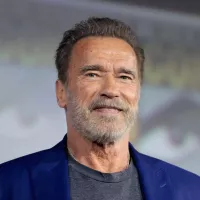
Arnold Schwarzenegger is an Austrian-American actor businessman former politician and...

Stevie Wonder born Stevland Hardaway Morris is a highly influential...
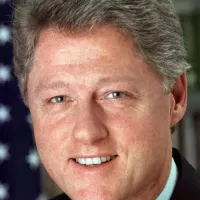
Bill Clinton the nd U S President - served as...
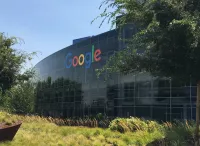
Google LLC is a multinational technology company specializing in online...

Barack Obama the th U S President - was the...

Martin Luther King Jr was a pivotal leader in the...
Trending

6 minutes ago PewDiePie leaves gaming after 13 years to embrace fatherhood and new ventures.

6 minutes ago Dennis Rodman: NBA's First Real Entertainer and Rebounding Machine, according to BJ Armstrong.
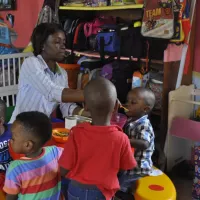
6 minutes ago Childcare's economic boost in Prescott Valley, Yavapai crisis, and Hochul's universal options.
7 minutes ago Ali Larter & Michelle Randolph React to 'Landman' Characters' Arrest
23 days ago Gary Cole Reveals Original 'Brady Bunch' Cast Reaction to 1995 Movie.

7 months ago Adam Sandler in 'Jay Kelly' with George Clooney; Rival movie releases compared.
Popular
Aftyn Alyssa Behn is an American politician currently serving as...

William Franklin Graham III commonly known as Franklin Graham is...

Candace Owens is an American conservative political commentator and author...

XXXTentacion born Jahseh Dwayne Ricardo Onfroy was a controversial yet...
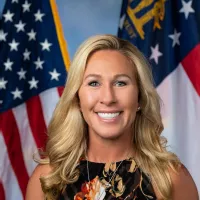
Marjorie Taylor Greene known as MTG is a U S...
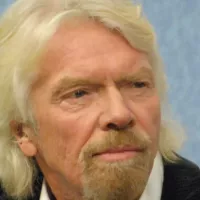
Richard Branson is a prominent English business magnate best known...
